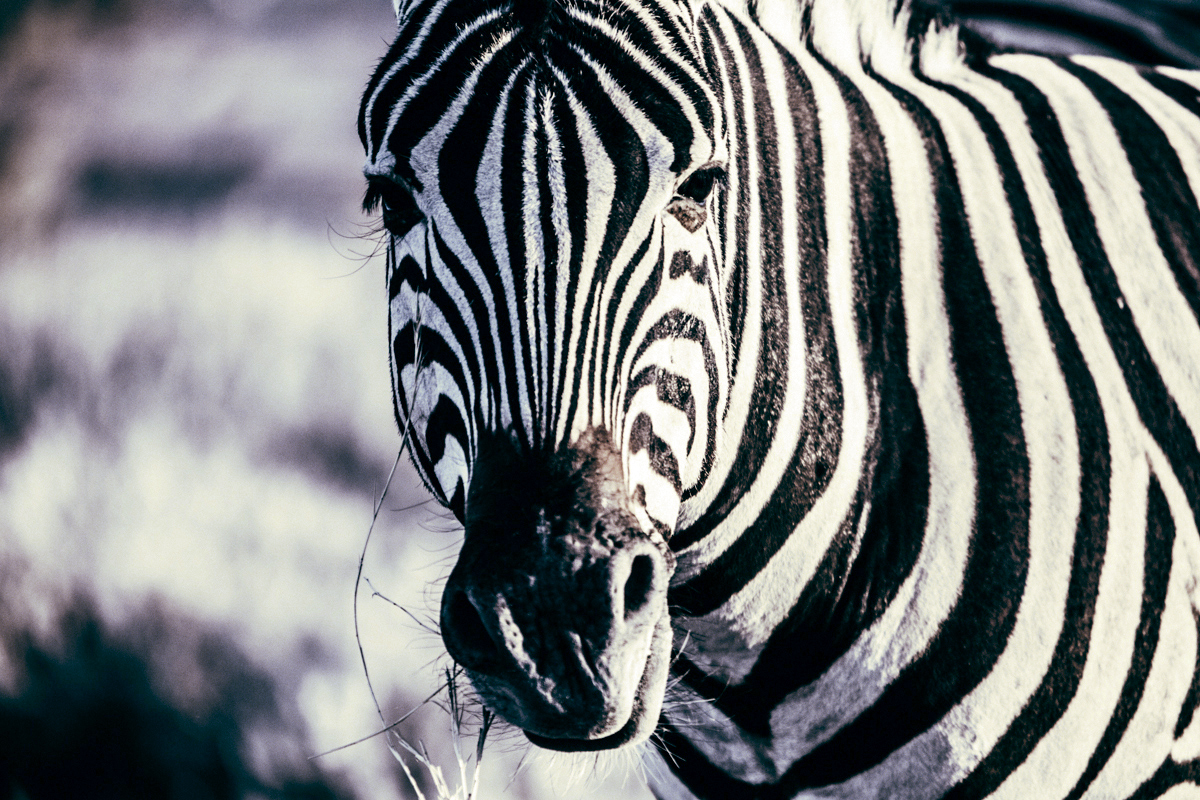MY FAVORITE travel conference of the year has been the ATTA’s Adventure Travel World Summit. Last year it was hosted in Namibia, and Matador was invited to come down and be part of the “storytelling team”. The ATTA team puts together dozens of “pre-summit adventures” for conference attendees, and they were kind enough to let us design our own.
Basically, we wanted to do a 1300km road trip that would take us through a large and diverse portion of this massive country — all “self drive”, no guides. Just us, our truck, and the open road. It was f*cking epic.

Welcome to Namibia
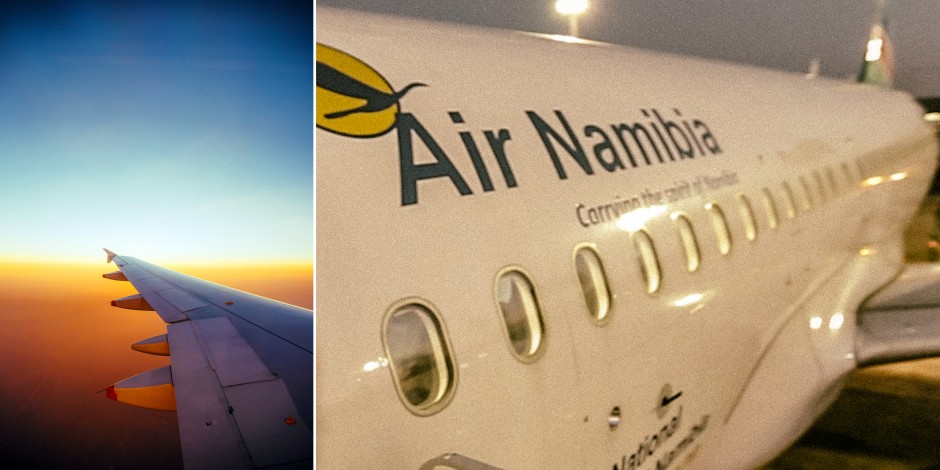
The arrival
When we flew in from Cape Town we had no idea what to expect. Looking west out the window of the plane as we approached Windhoek, the sunset drowned out a faint image of a river through endless desert. The anticipation of what lay ahead was palpable.
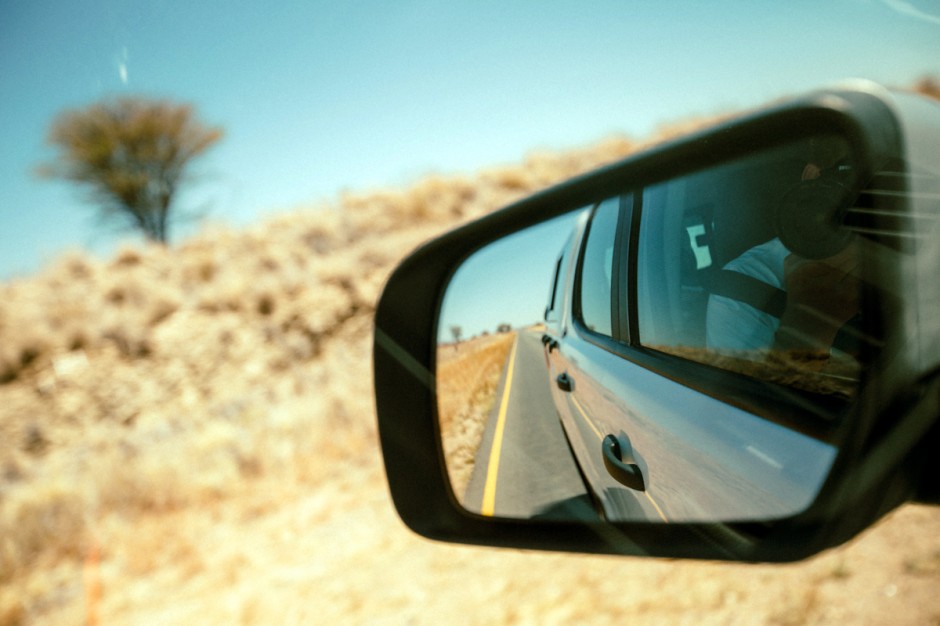
Logistics
When we arrived in the capital we were greeted by David and the outstanding team at ATI Holidays, who planned the itinerary for our trip. Driving unguided through Africa might sound a little more adventurous than most people are up for, but I assure you of three things: (1) Self drive is, without question, the best way to see Namibia, (2) The quality of the vehicles, equipment, and logistics at ATI will put your mind at ease regarding just about anything that could potentially go wrong, and (3) You begin to notice pretty quickly that Namibia is as safe as it gets in Africa and the roads are shockingly reliable.
Intermission
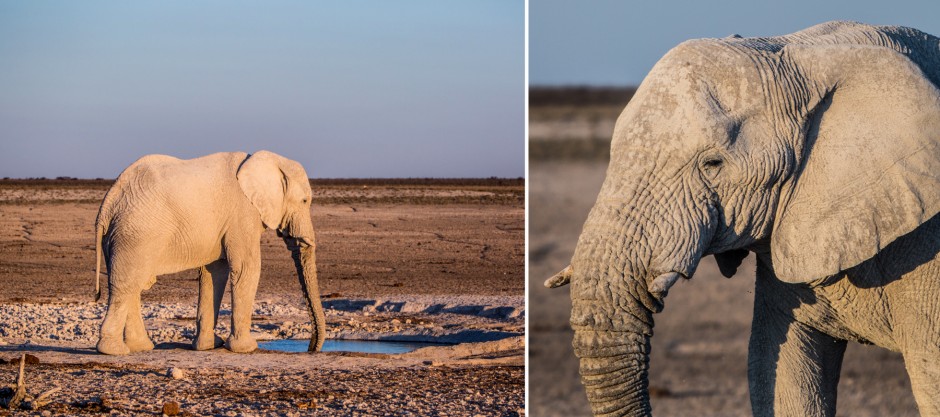
Arrival in Etosha
After leaving Windhoek, our journey began in Etosha National Park, probably Namibia’s best-known park for spotting wildlife. Etosha has all of ‘the Big Five,’ and we were instantly excited by the prospect of doing our first self drive safari around big, wild game.
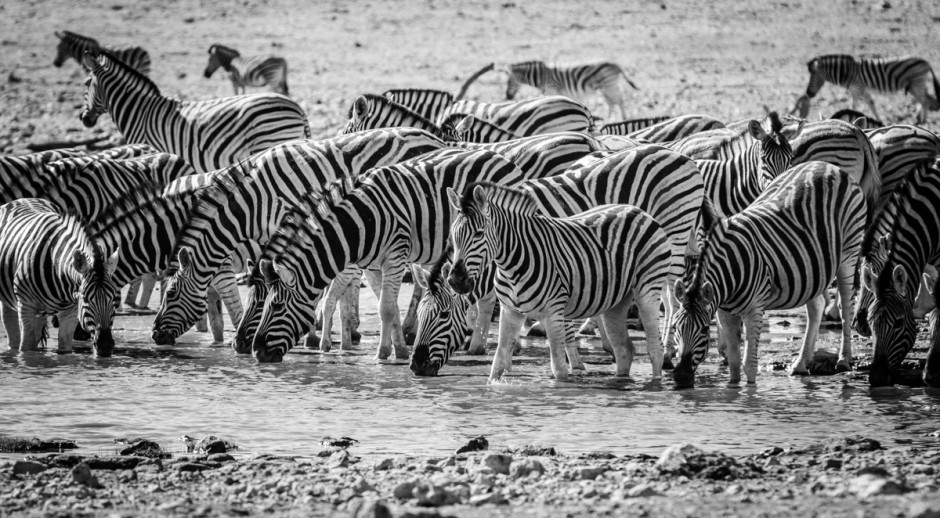
Two worlds separated by the seasons
Etosha is a massive expanse of land situated around a huge lake in the rainy season, which becomes an even bigger dry pan when the rains cease. We were there in the dry season, and it was easy to find wildlife by focusing on the water holes that had yet to dry up. Although seeking out the game might be more difficult when everything is green and water is plentiful, I’m already excited to go back to Etosha during the rainy season, when hundreds of elephants will be hanging out in the lake.

Birds with personality
You’ll see an unusually large number of ostriches in Etosha. From shooting video of them running parallel to our truck at 40mph to watching their hilarious methods of drinking water, we had a blast shooting these goofy, yet fascinating, creatures.
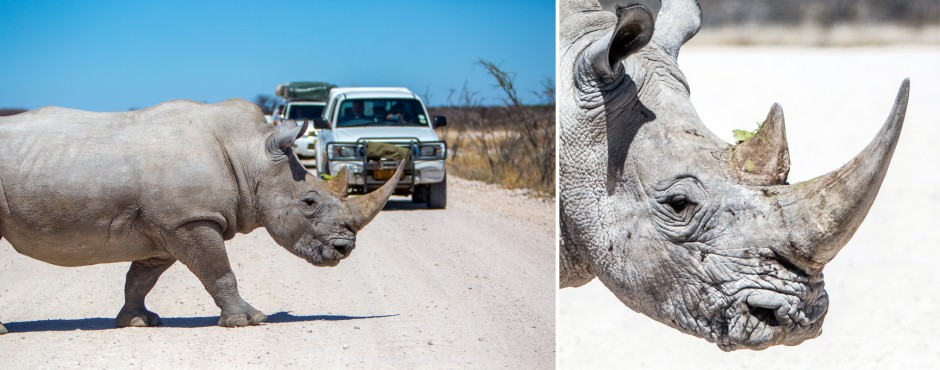
Where rhinos thrive
Namibia is the only country in Africa where wild rhino populations are actually increasing. Just why this is happening is a topic of intense debate, but in Etosha the rhino is neither rare nor shy and always very well protected.
Intermission

Spectacular landscapes
Like much of Namibia, the landscapes in Etosha are enough to stop and take a minute with, even when animals aren’t around.
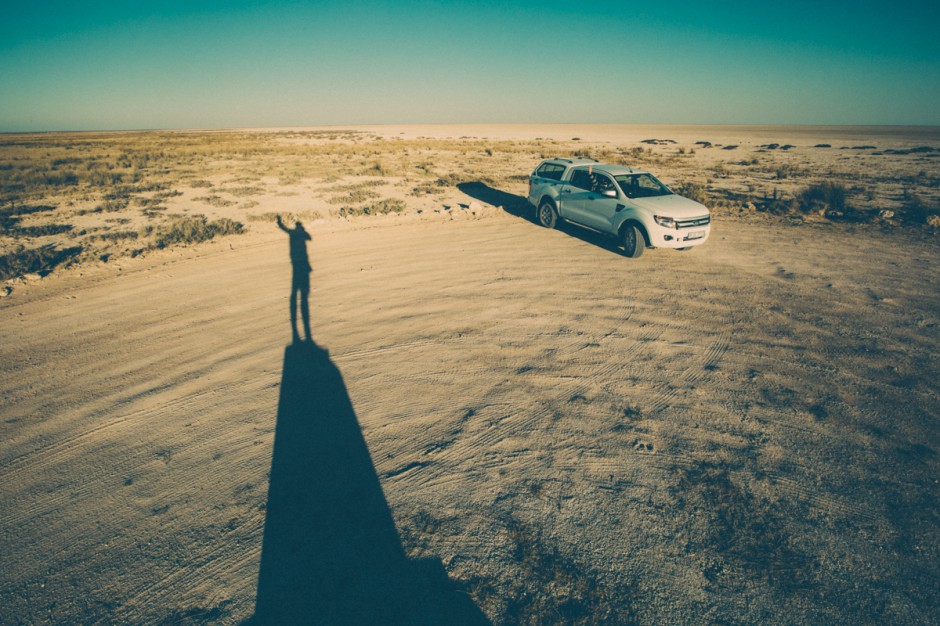
Spectacular landscapes

Spectacular landscapes

You herd me
On our second day in the park, we came upon a massive herd of zebra. At least 2,500 of them made their way across the road we were on and slowly but decisively overran one of the park's largest watering holes until it was consumed by the cloud of them.
Intermission
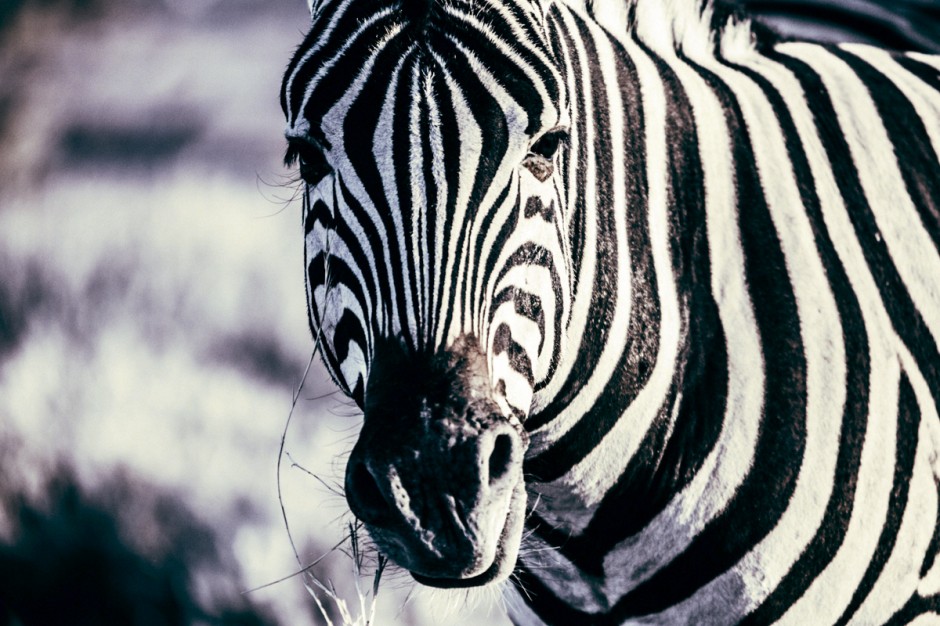
The zebra

Lazy days
To conserve energy, lions are most active at night when they go out to hunt. During the day they typically sleep 20 out of every 24 hours.
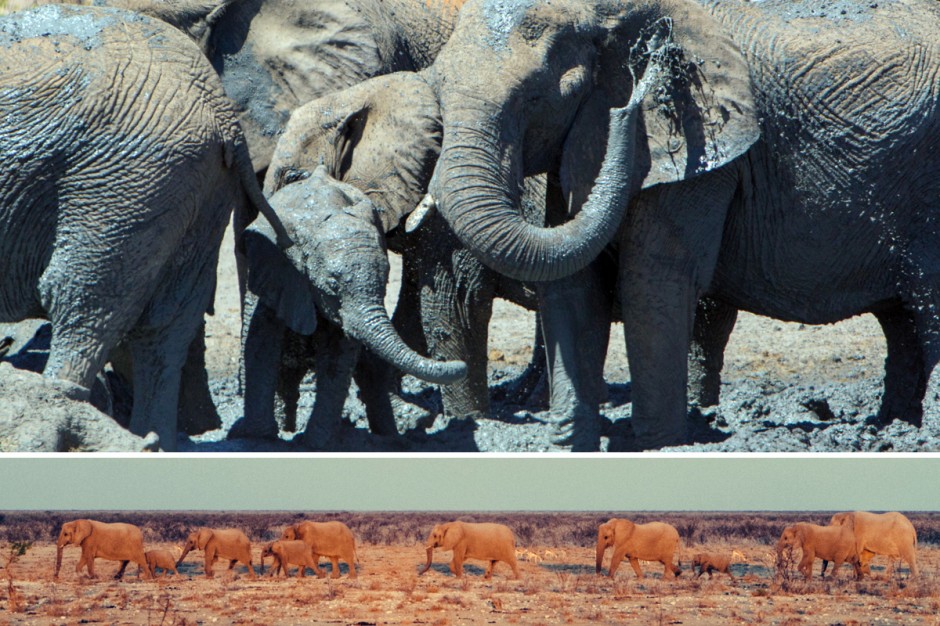
Family formations
The elephant population was impressive in Etosha. It was a treat to see them lathering each other in mud for some natural sunblock and traveling across the country in big lines as the sun set.

Dust devils
Because of the dry land and heat, we saw tons of huge dust devils on the long stretches of our trip through Etosha. Some of them didn’t look like much from far away but were almost the size of a small tornado as they tore across the road in front of us.
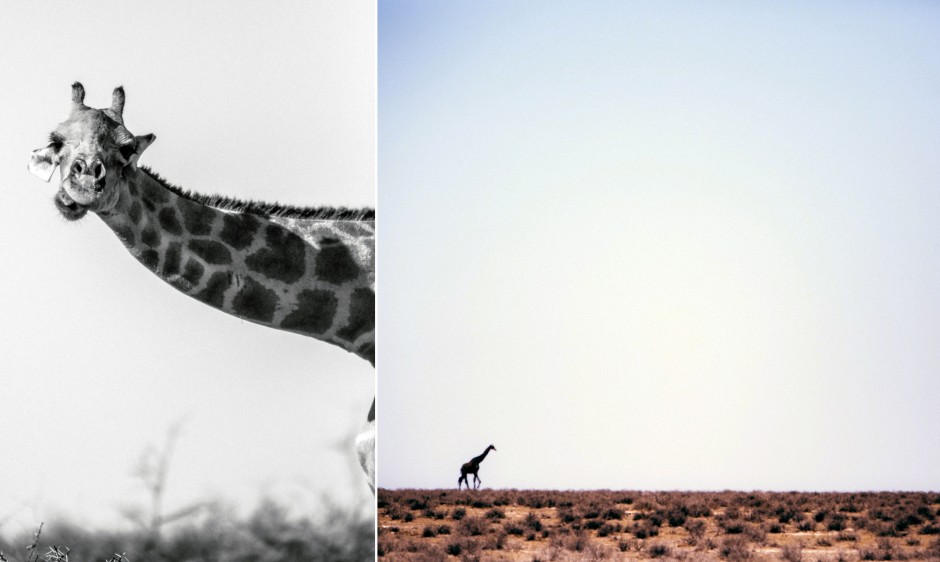
Leaving Etosha
After a couple of quick, but very fruitful days of game drives, we headed north towards a remote park exit across big open country and saw no one for hours.
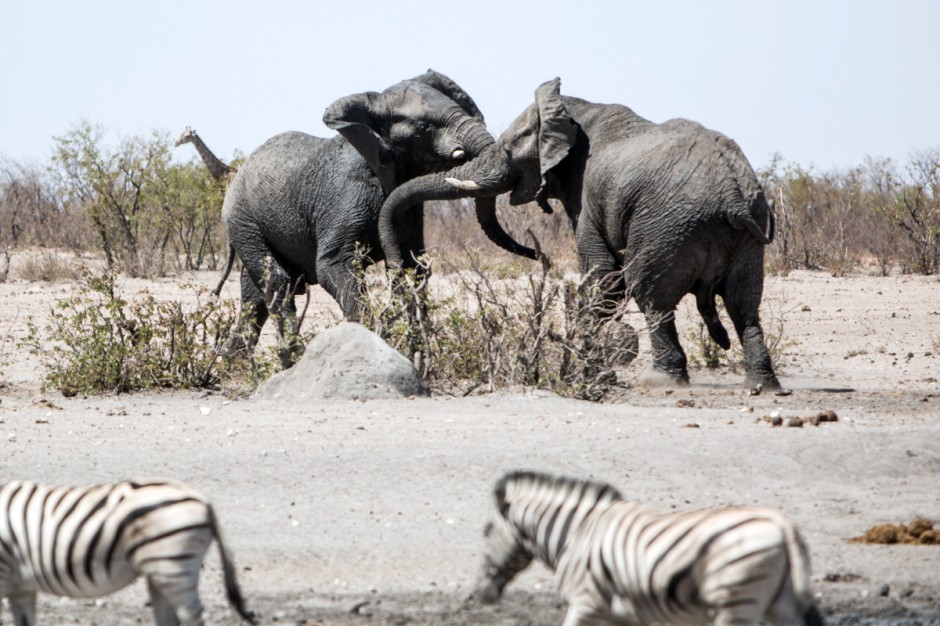
Family feuds
At one of the final watering holes we passed on that remote road, we came upon a large herd of elephants bathing in the mud and splashing in the water. There was some pretty intense sparring between two bulls from the herd.
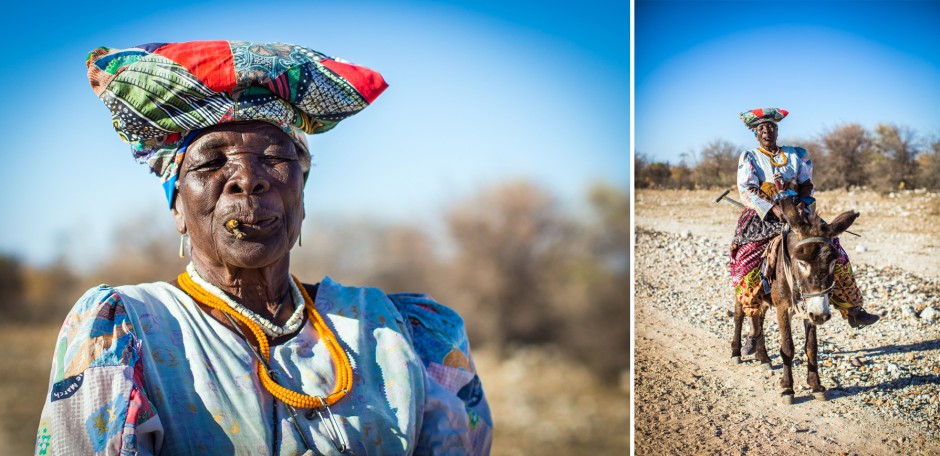
(Adapted) style for days
From Etosha we drove north towards the border with Angola, and the style of people’s dress began to change. Apparently when Namibia’s German colonizers arrived, the indigenous people borrowed elements of their style of dress, and the result is unique and colorful. There’s no way the Germans looked this cool.
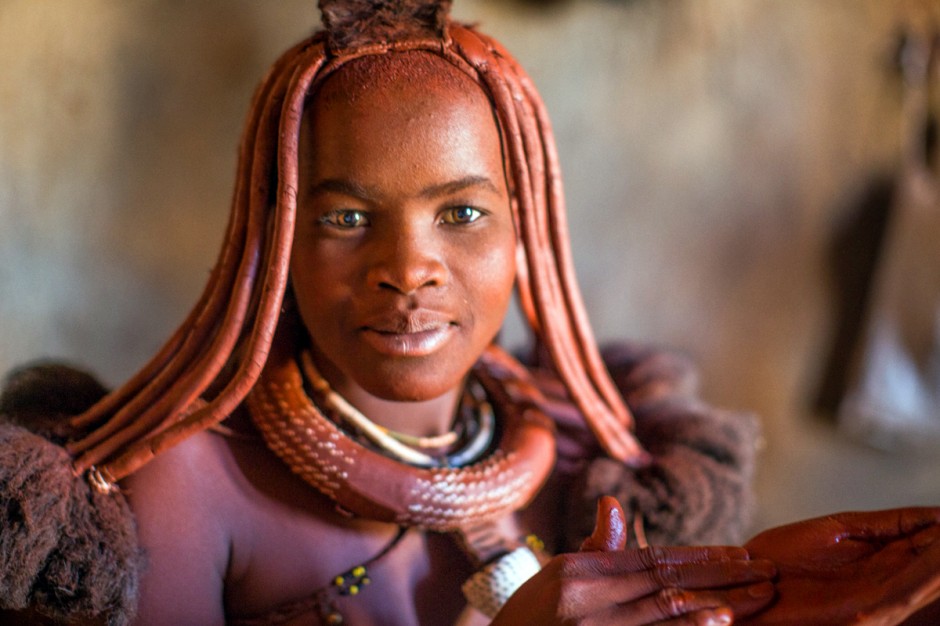
The Himba
After a few more hours of driving we arrived in Opuwo, which is one of the areas most densely populated with the indigenous Himba people who still practice their beautiful way of life in small villages around the arid mountains.

A warm welcome
We brought some jugs of water, sugar, and other goods that the village valued, and they invited us in to check out their village, huts, food storage, and livestock. In a month or so, they would pack up and continue to the next location in search of better grazing for their animals.
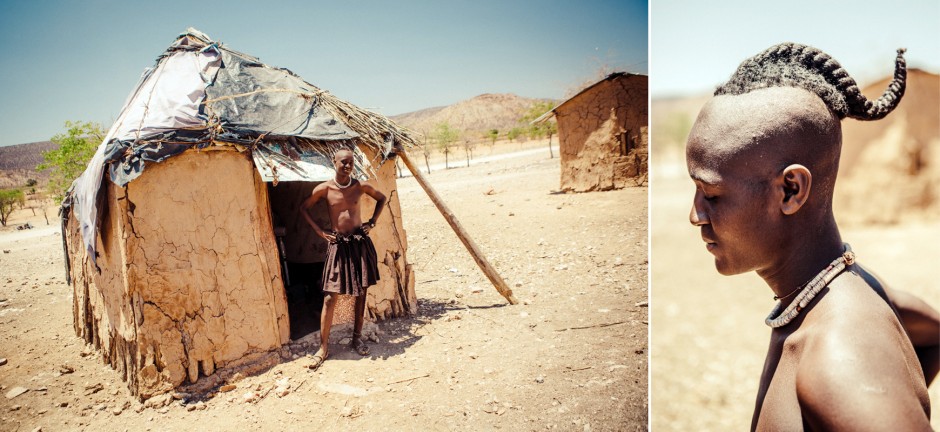
Bachelor pad
This young warrior, who figured he was about 14, spoke a little English and the rest we managed through hand gestures.
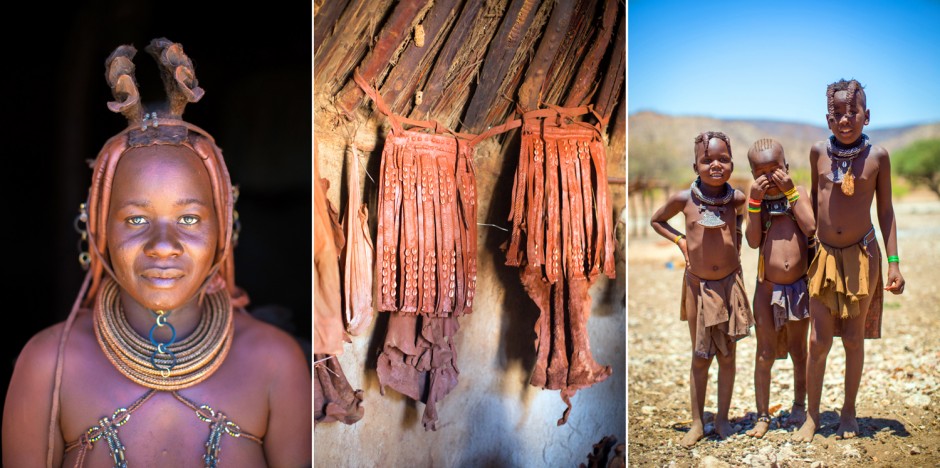
Himba portraits
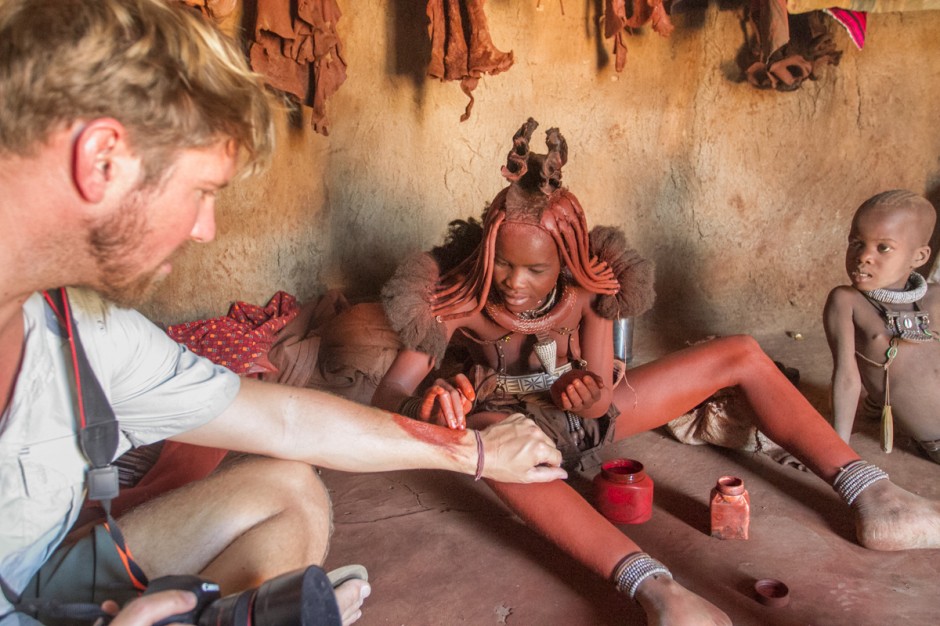
A different kind of lotion
In place of regular bathing, the Himba (women in particular) spread a daily layer of mud on themselves. This is a mixture of clay, cow dung, and crushed plants and roots. Despite the fragrance, you can imagine it does feel good on the skin.
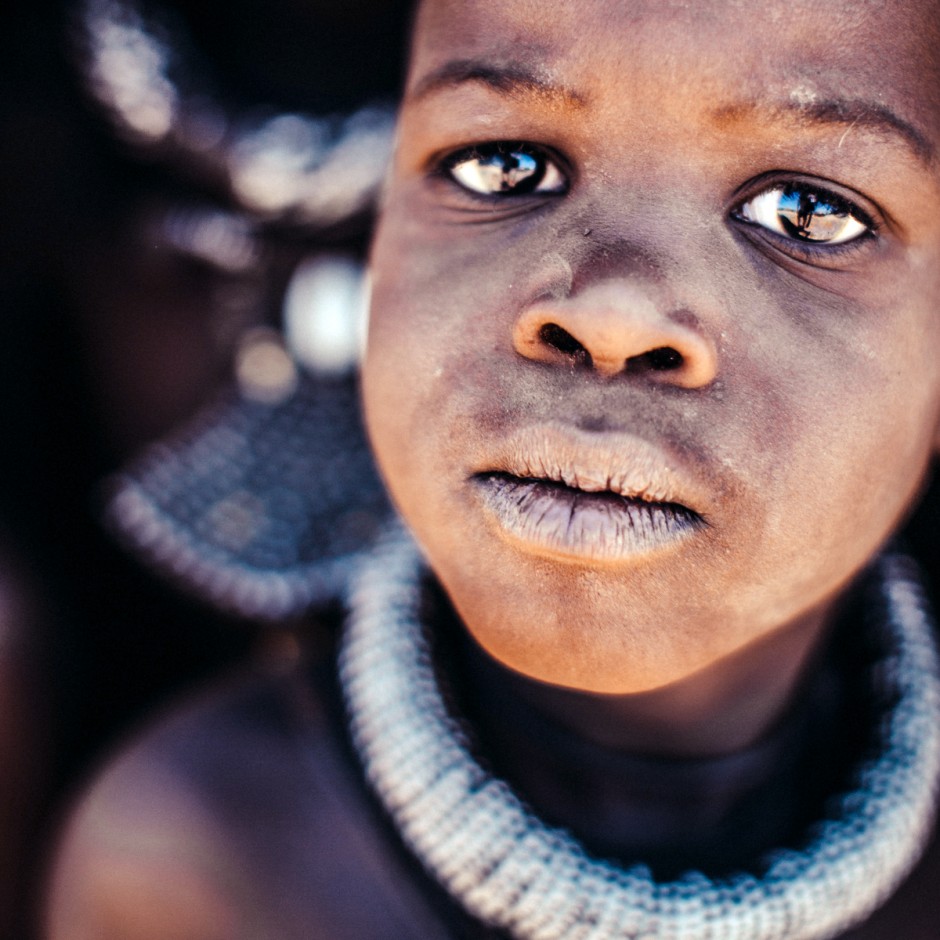
Himba child

Hanging out

Not so shy
Despite the lack of contact with most modern technologies we take for granted, the kids weren’t shy in front of the cameras and got a kick out of seeing themselves on the LCD screens after each photo.
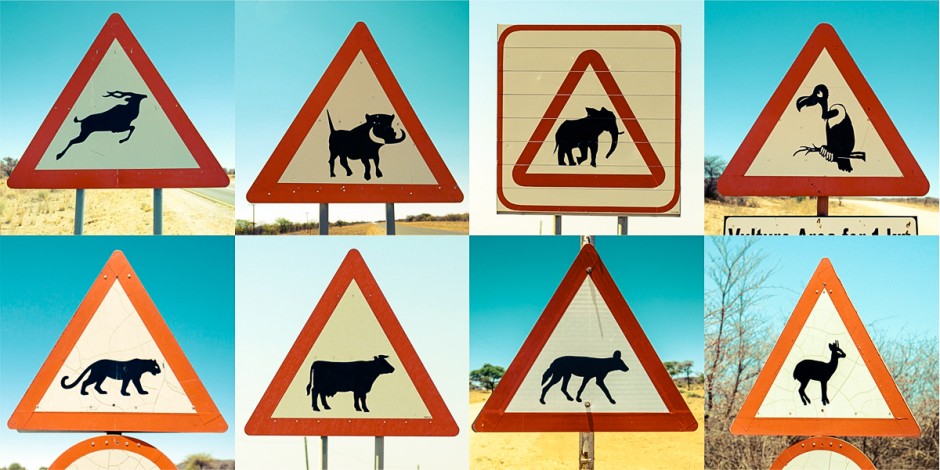
Exotic crossings
After our visit with the Himba, it was back on the road towards Damaraland.
